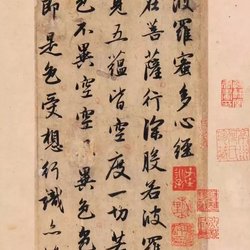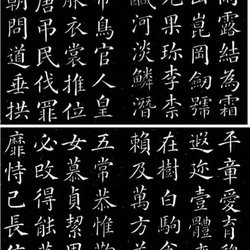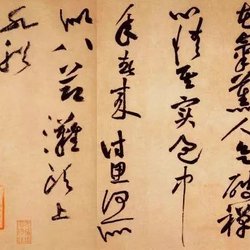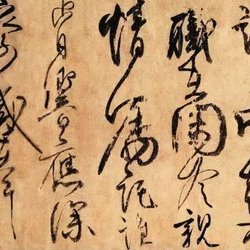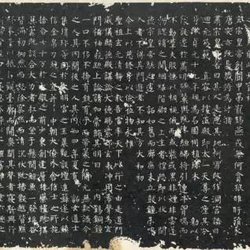
In the first year of Yuanzhen (AD 1295) of Yuan Chengzong, it had been sixteen years since the Southern Song Dynasty fell.
Qian Xuan is fifty-seven years old this year. Zhou Mi is sixty-four years old. They all lived in seclusion at Wuxing's house.
Zhao Mengfu was forty-two years old and had just resigned from the post of general manager of Jinan Road. He said that he was sick and needed to recuperate, and refused to stay in Dadu, so he ran back to his hometown in Wuxing.
Most people of later generations will know that in the last month of this year, Zhao Mengfu left this passage on a painting:
"The ancestors of Zhou Gongjin were from Shandong. I stayed in Shandong for three years and came back. I talked to him about the scenic spots in Shandong. Shuhuabuzhu Mountain is the most famous. It is steep and independent, which is amazing. But Gongjin has never been to Shandong. , I drew Huabuzhu Mountain and Queshan Mountain for him to see, titled "Picture of Autumn Colors of Quehua Mountain".
Gongjin's father is from Qi, and Yu Tong guards Qizhou. After returning from office, I would like to speak about the mountains and rivers of Qi for the sake of the public. Duhua Buzhu is the most famous, and is found in "Zuo Zhuan". And its shape is steep and upright, which is quite strange. This is for the purpose of making this picture. To the east is Queshan Mountain. It was named "Picture of Autumn Colors of Magpie Flowers".
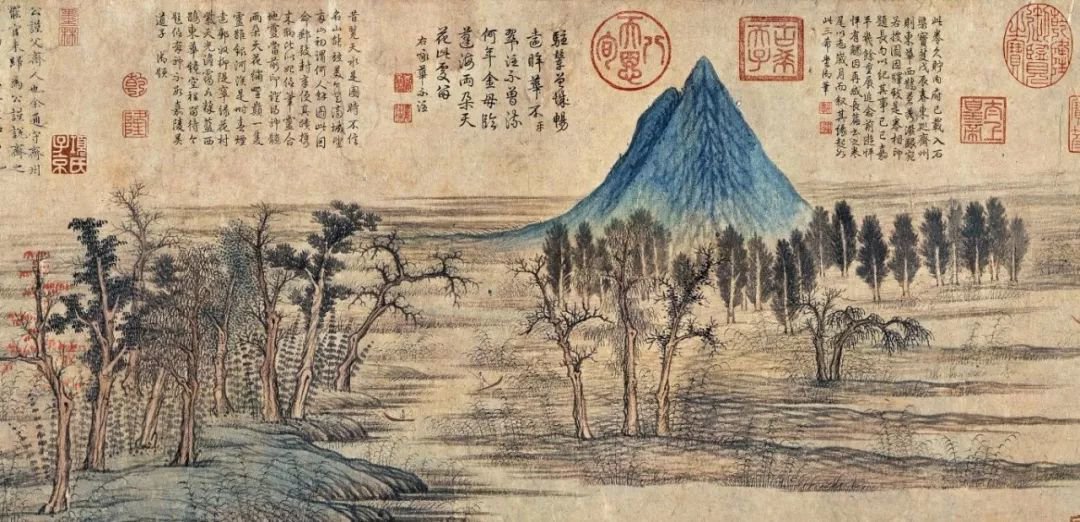
Well, "Autumn Colors of Magpies" is just like this...partially.
Zhou Gongjin is Zhou Mi who wrote "Excellent Words" and "Old Wulin Stories".
Before "Autumn Colors of Magpie Flowers", let's talk about Zhou Mi and Qian Xuan for a few minutes.
Because Zhao Mengfu, who painted "Autumn Colors of Magpies", was a person who most naturally should be a survivor of the Southern Song Dynasty, but instead he became an official of the Yuan Dynasty.
Zhao Mengfu is the direct descendant of the Zhao family.
After all, he is the eleventh grandson of the founding emperor Zhao Kuangyin.
His ancestor was originally Zhao Dezhao, the second son of Zhao Kuangyin. Later, his father adopted his fourth son, Zhao Defang, from this branch, so Zhao Mengfu became from Zhao Defang's branch.
Because of the famous mystery of succession in history, Zhao Defang did not get close to the throne in the Northern Song Dynasty, but miraculously regained this supreme position in the Southern Song Dynasty.
It's a pity that the Zhao family's world has perished.
People who had nothing to do with the Zhao family either jumped into the sea and died for their country, or remained anonymous, or went into exile. But Zhao Mengfu left Wuxing at the age of thirty-three and went to Dadu to become an official in the Yuan Dynasty.
At that time, he was the head of the "Eight Talents of Wuxing". He was a descendant of the royal family of the Song Dynasty, a talented scholar from the south of the Yangtze River who was versatile in poetry, calligraphy and painting, and a well-educated Confucian with both good looks and knowledge. It is simply a god-like existence.
No wonder Kublai Khan looked at him for the first time and said, "He is a god!" - and when he looked at him again, he said, "He is still a god!"
It was not until the later years of his life when he was sixty-six years old that he completely escaped from the court with an extremely prosperous and wealthy status.
Because of this incident, Zhao Mengfu was scolded for a long time.
The survivors of the Southern Song Dynasty looked down upon him, and so did his Mongolian colleagues.
Later, in the Ming and Qing Dynasties, people hated him so much that even his words became "all flattery and useless".
It is now difficult for us to figure out what Zhao Mengfu was thinking in those years, nor how he endured it.
It is said that he is a gentle, peaceful, patient and tolerant person.
Just like the calligraphy and paintings he left behind, they all have a gentle and jade-like temperament.
For example, "Autumn Colors of Magpies".
"Autumn Colors of Quehua" depicts the area around Queshan and Huabuzhu Mountains in the northern suburbs of Jinan, Shandong Province, Zhou Mi's hometown. The nine hills in this area form a scene of their own, with a nice name, called "Qi Yan Nine Points". Quehua is two of them.
Huabu (Reading Fu) Zhushan is a conical hill on the south bank of the Yellow River. Because the mountain is surrounded by water and the mountain looks like a lotus blooming in a puddle, it is called "a mountain with flowers blooming in a puddle". The mountain rocks are green and gray, rising from the plains into a single hill. There is a spring at the foot of the mountain, called Huaquan. Li Bai wrote a poem, saying that "the mountains here are so steep and beautiful, and they are as green as hibiscus."
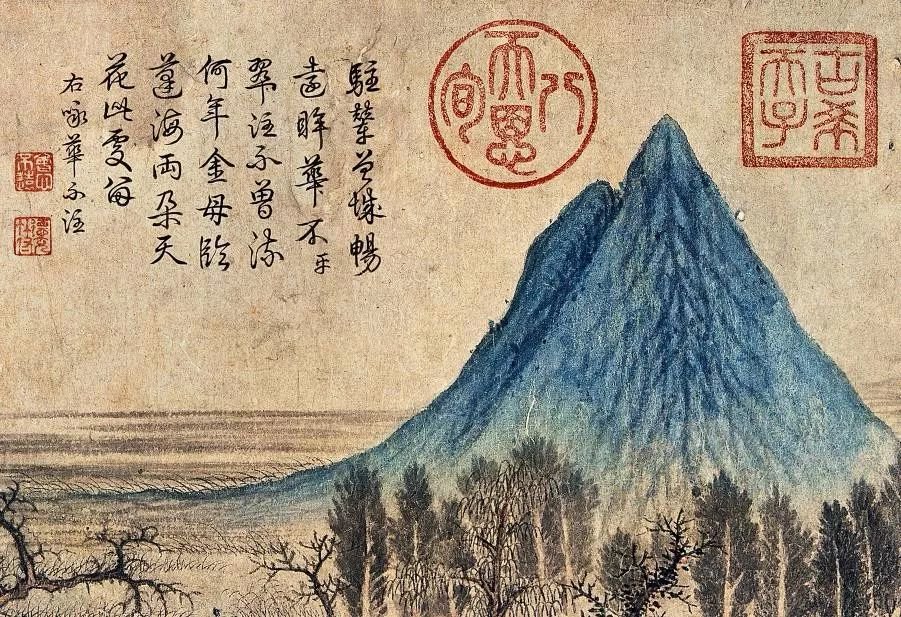
Queshan is located on the north bank of the Yellow River. It is said that Bian Que once made elixirs here. It is also said that black magpies often flew here, so it was called Queshan. Queshan Mountain is round, gentle and flat, and was painted like a steamed bun by Zhao Mengfu, which contrasts with the steepness of Huashan Mountain.
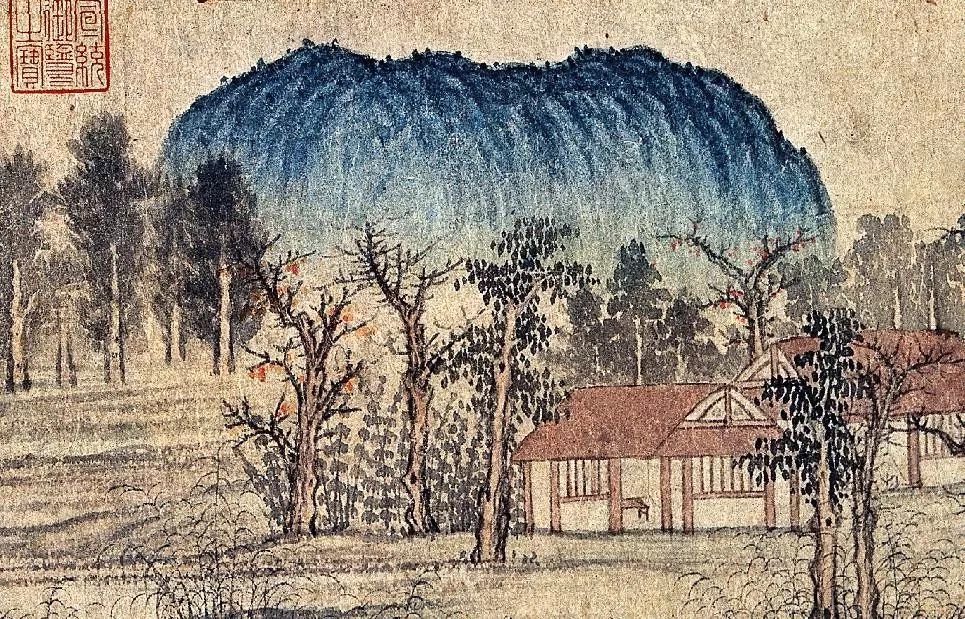
Part of the Autumn Colors of the Magpie Flower by Zhao Mengfu of the Yuan Dynasty
In reality, Huabuzhu Mountain is to the south of the Yellow River, and Que Mountain is to the north of the Yellow River, and the two mountains are dozens of miles apart.
But Zhao Mengfu’s Huabuzhu Mountain and Queshan Mountain are surreal.
In this long scroll, which is as peaceful as an idyllic dream, Zhao Mengfu used his exquisite pen and ink to place two hills at the beginning and end of the long scroll. Between the two mountains is a vast plain, with Pingchuan, Suzhu, and red mountains. There are reed trees, bamboo fences and thatched huts, and the distant water has autumn waves. There are farmers working peacefully, holding poles, fishing, leaning on doors, or strolling. There are also four or five cute lambs strolling around freely, not avoiding strangers.
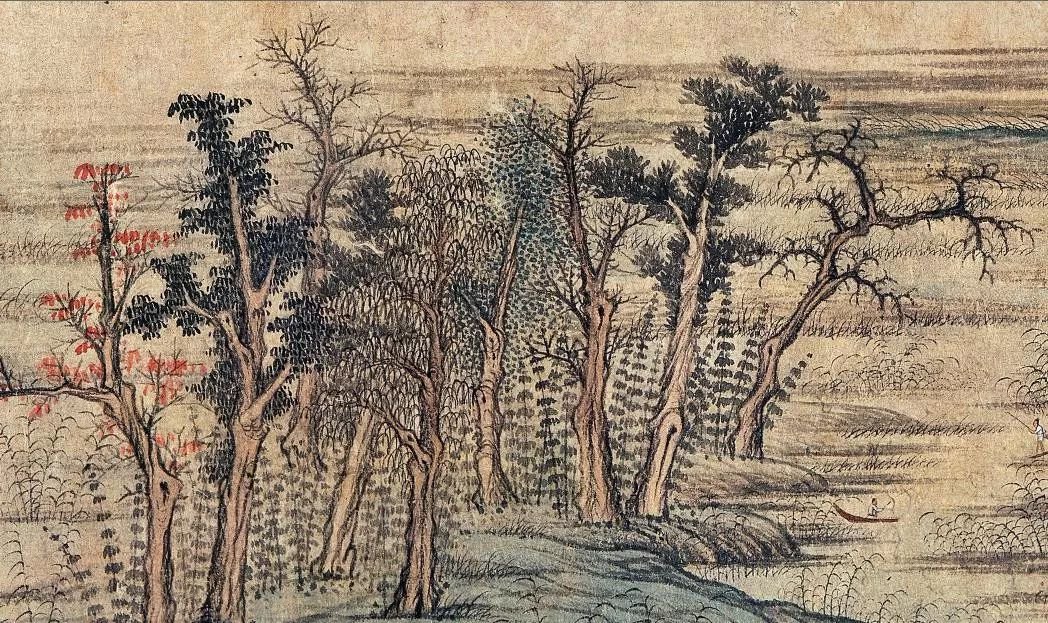
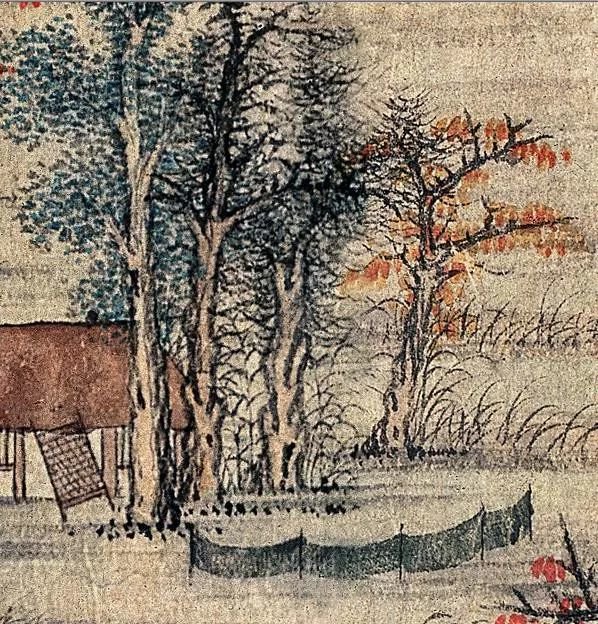
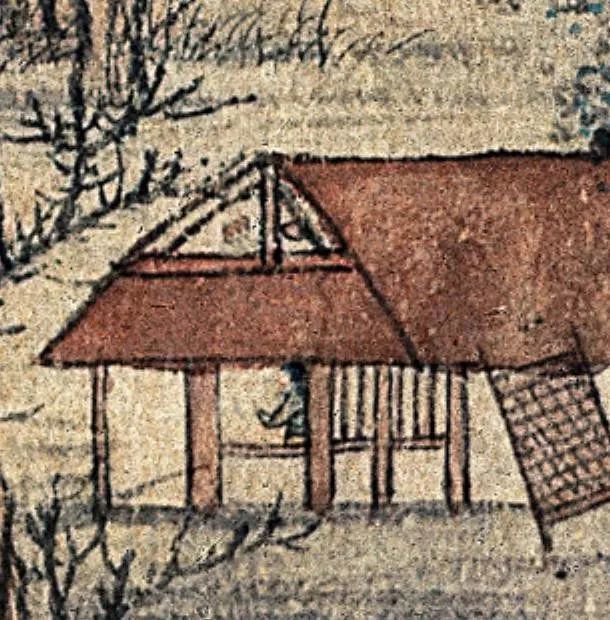
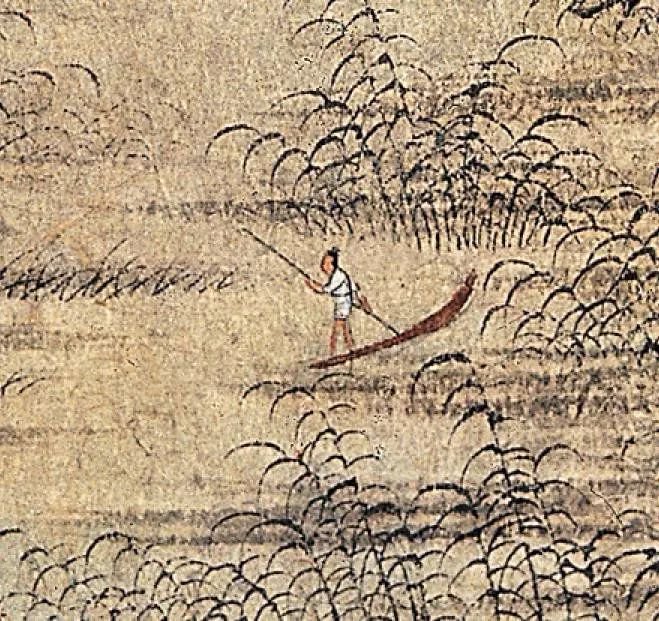
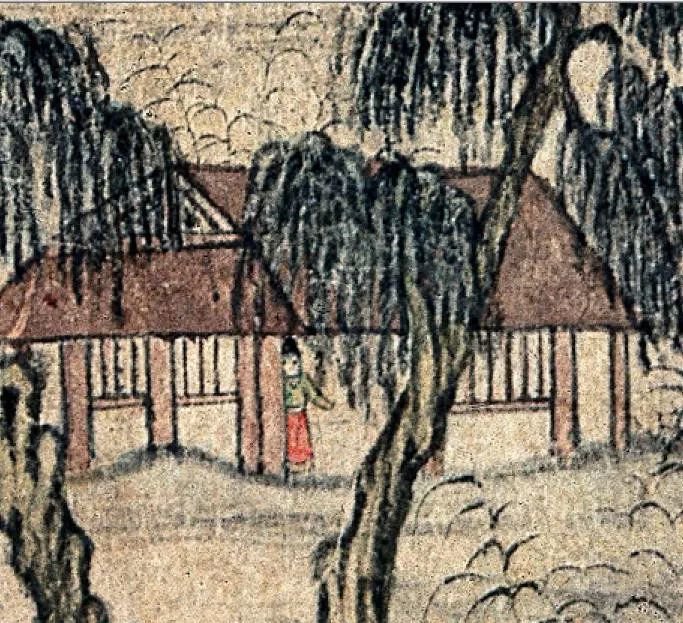
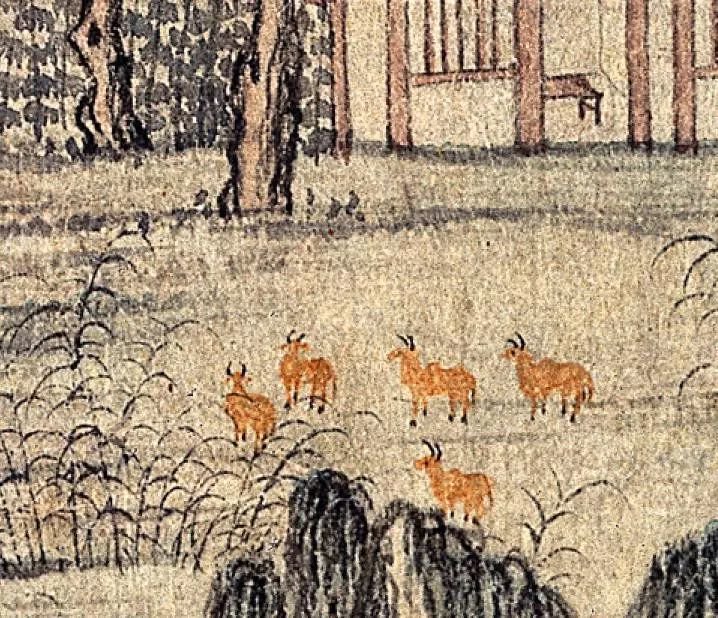
It is said that Zhao Mengfu used three or four different pens to draw this picture:
The two mountains of Quehua and Tingzhu are drawn out with a large brush stroke. The fine brushwork outlines the delicate reeds, flat boats and figures. As for the trees and huts, they use medium-sized pens.
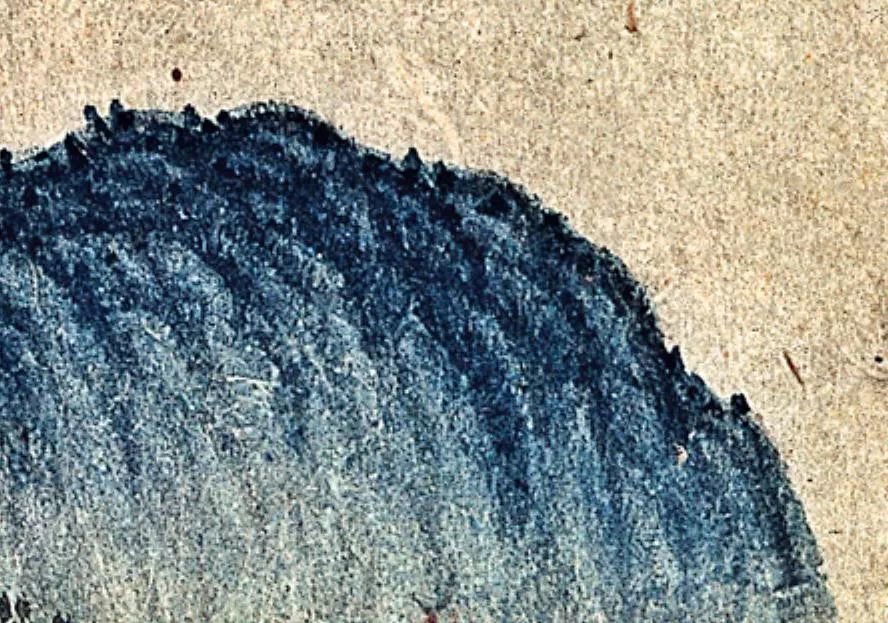
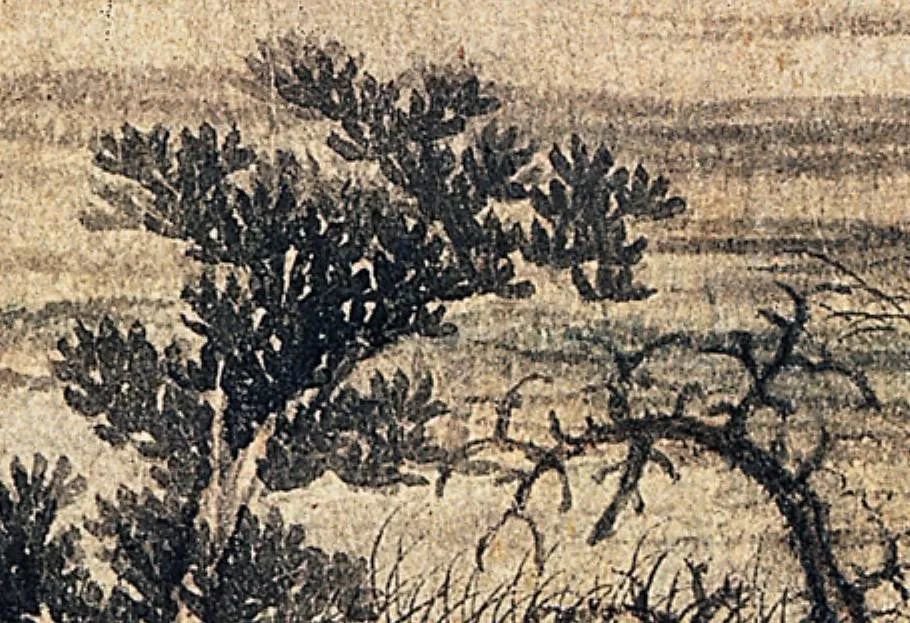
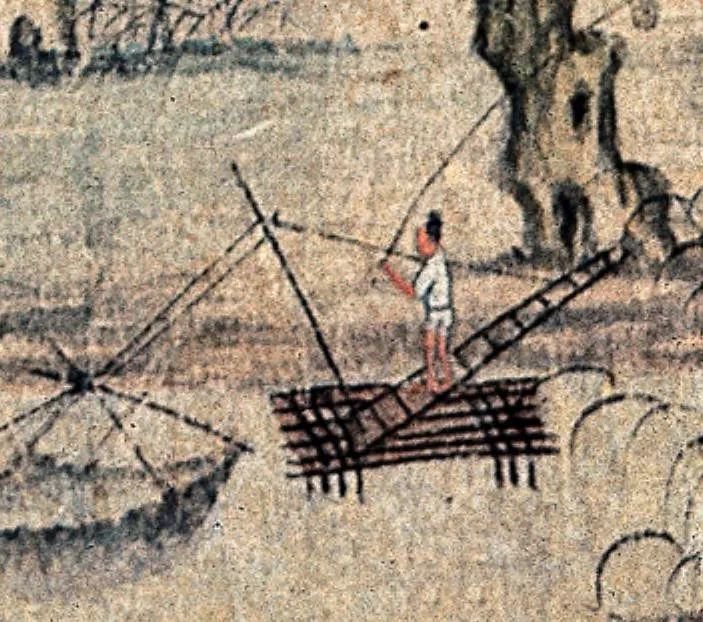
It is said that Zhao Mengfu placed his sorrow for his motherland and his dream of seclusion in this quiet and elegant landscape - If there is no pure land in the world, then I will draw a pure land myself, without noise, disputes, or dynasty changes. There is no worry about becoming an official or becoming an official.
The suffering in the world is far away on the other side of the river.
Everyone who has seen this painting is amazed.
Yang Zai commented that this painting can only be compared with "Lanting Preface" and "Wangchuan Picture".
Xi Zhimojie is the masterpiece of calligraphy and painting for thousands of years. Dulanting Narrative (Preface) and Wangchuan Picture are particularly proud of his writing. Wuxing Zhao Chengzhi was famous for his calligraphy and painting, and critics said that he was as beautiful as the two masters. Here I look at the picture of the magpie flowers and the autumn colors, and I realize that there are all kinds of wonderful things in it. It is refreshing to think about, and it washes away the spirit of craftsmanship. Can it be said that it is not a proud pen? The Orchid Pavilion of Chengxi is also the Wangchuan of Mojie.
Dong Qichang said that this was Lao Zhao's proudest work in his life, which can be compared with the "Lotus Society Picture" by Li Gonglin, the master pen of the Northern Song Dynasty! I saw it once twenty years ago, and I can never forget it.
I saw this picture in the Xiang family in Jiaxing twenty years ago and thought that Wen Min's most successful painting was as good as Bo Shi's "Lotus Society Picture". Every time I go back and forth in my arms. On the solstice day of this year, Xiang Huibo visited me in a small boat and brought this scroll to show me. The "Lotus Society Picture" has already been placed on the table, and they are looking at each other and admiring each other. Hui Bo said: Don't let the sword of Yanjin judge the male and female for a long time. So it belongs to Yuzang's Xihongtang.
It is said that before "Autumn Colors of Magpie Flowers", Zhao Mengfu had no representative landscape paintings.
There is something worth pondering about the time before and after the publication of "Autumn Colors of Magpie Flowers".
Zhao Mengfu was forty-two years old this year and had been an official in the Yuan Dynasty for nine years.
He was a talented man. Although he was ridiculed by his Han compatriots and despised by his Mongolian colleagues, he became more and more powerful in his official career.
At the age of thirty-eight, in order to stay away from Dadu, he refused to join the Zhongshu Province to participate in politics, and worked hard to seek external transfer, and sent his wife Duan Sheng and his eldest son Zhao Liangxian back to Wuxing.
At the age of thirty-nine, Zhao Mengfu was sent to Jinan as he wished. Three years later, he resigned from office due to illness and lived in Wuxing. Then he painted "Autumn Colors of Magpie Flowers".
Several years after he finished painting "Autumn Colors of Magpie Flowers", Zhao Mengfu stayed in Wuxing to write and paint, refusing to return to Dadu for any reason. The court seemed to have nothing to do with him. Later, he probably came up with a compromise plan. , appointed him to promote Confucianism in Jiangsu and Zhejiang, and stayed close to Wuxing.
In such a semi-hidden and semi-official situation, Zhao Mengfu devoted himself to calligraphy and painting, and the regret of "being unable to work on landscape alone" was successfully resolved.
Some of his immortal masterpieces, such as "People Riding Picture" and "Water Village Picture", were published during this period.
It was not until fifteen years later that he was called back to Dadu.
It is said that he kept begging to go home, but the court's reply was that he would be promoted to the first rank.
After another nine years, because his wife Guangsheng was seriously ill, Zhao Mengfu was allowed to return home. After that, he continued to refuse to return to Dadu until his death in Wuxing three years later.
It is said that in his later years he wrote a poem called "Self-Alarm":
A sixty-three-year-old boy with chipped teeth is always ashamed of everything in his life. Only the remaining pen and inkstone are still there, and they are left to make jokes with the world.

